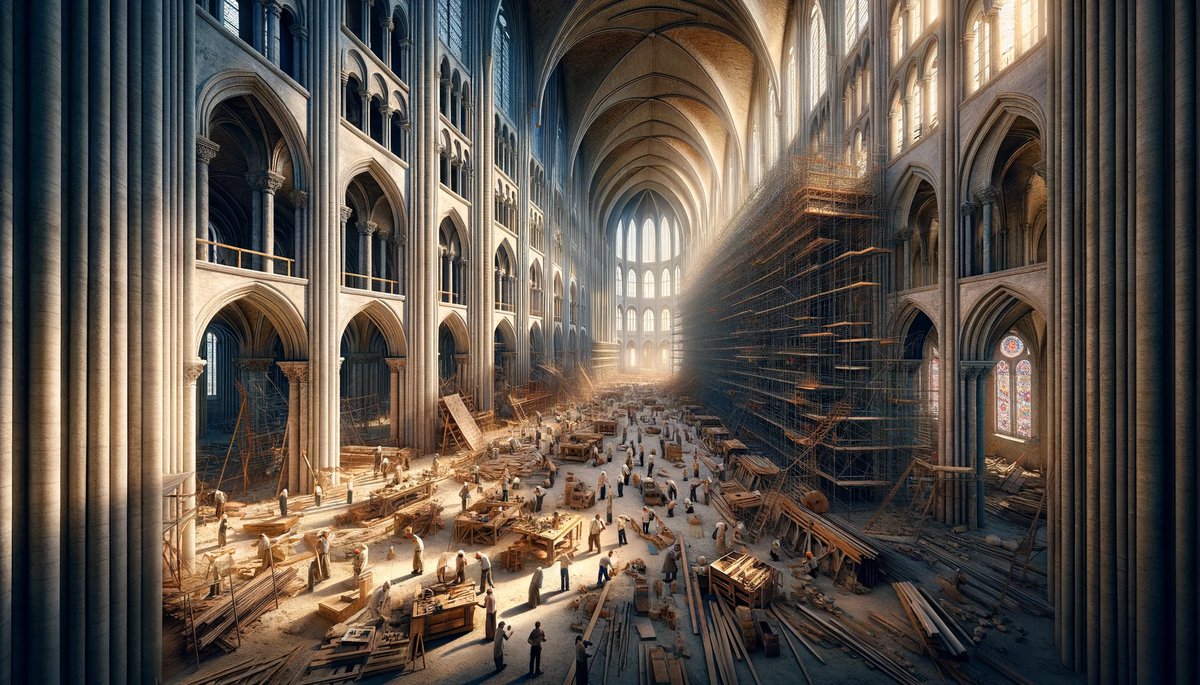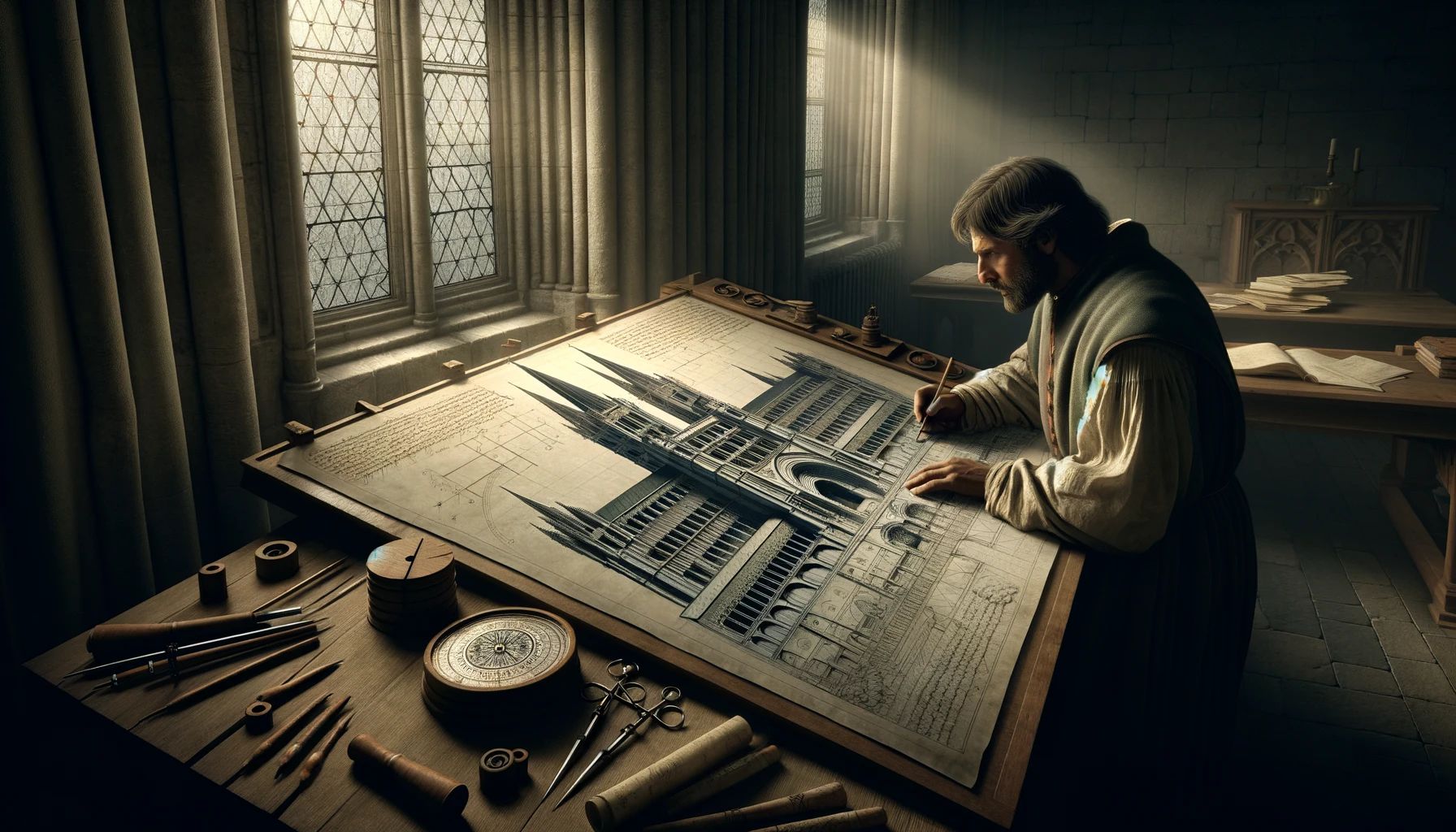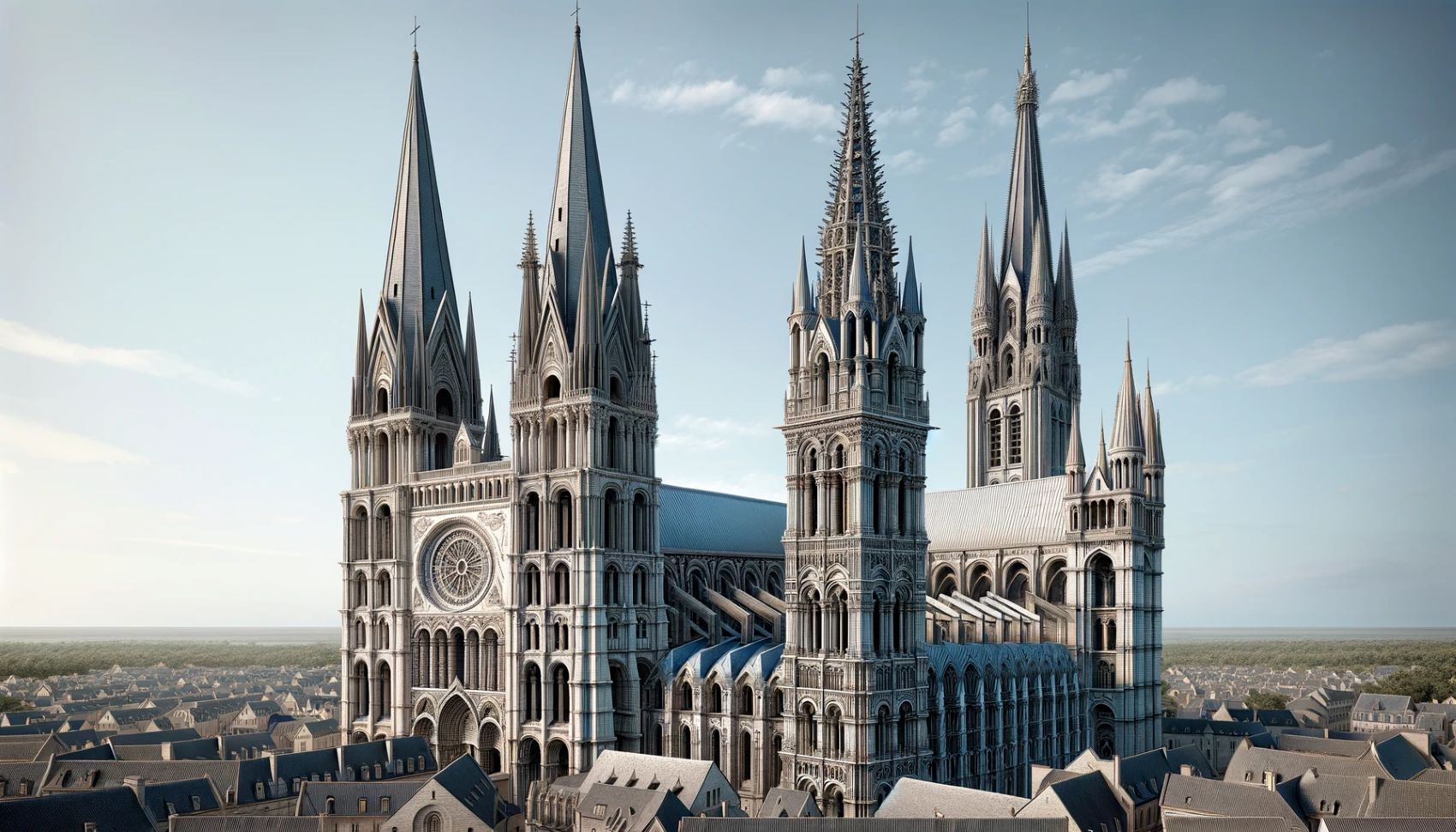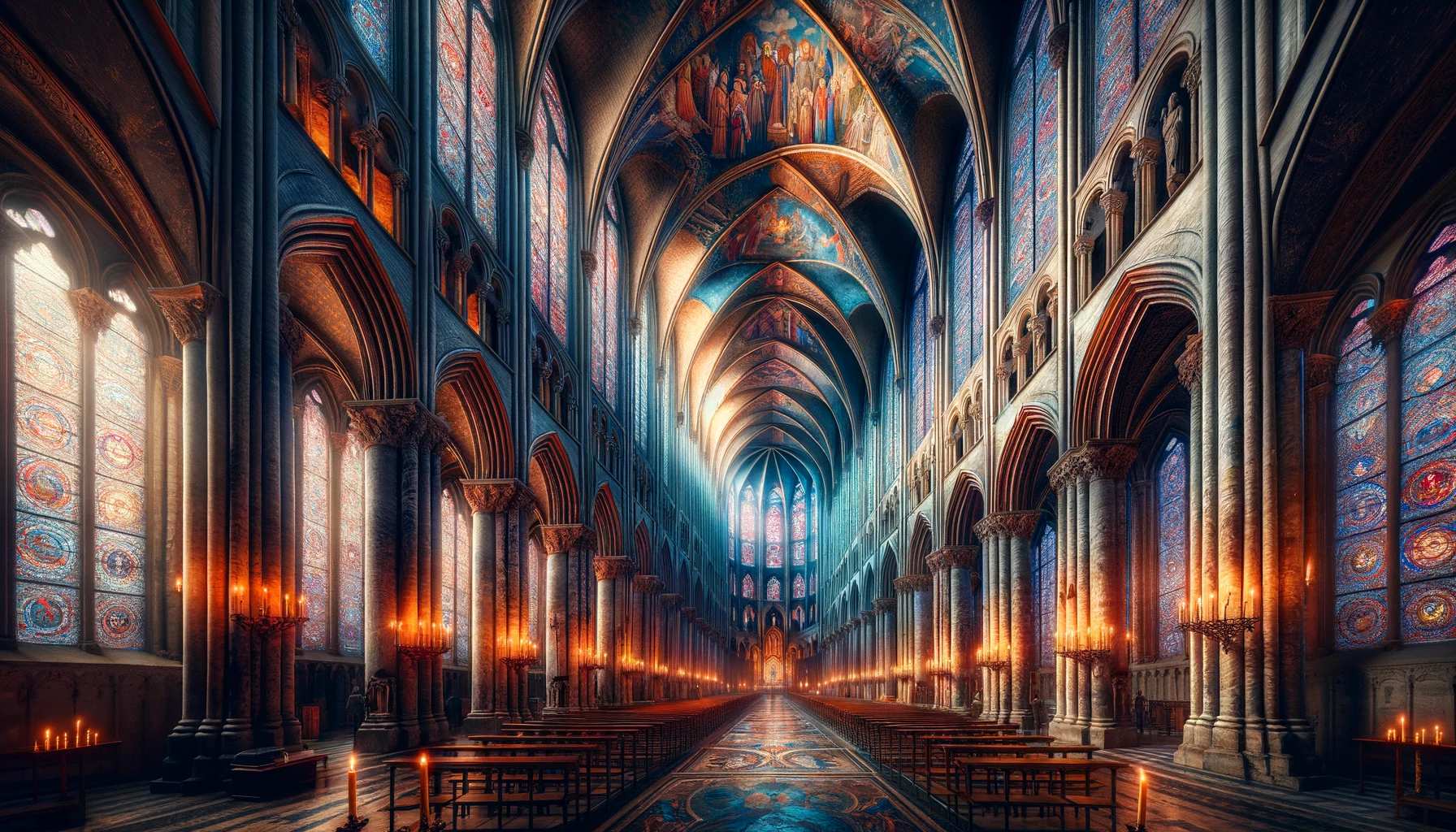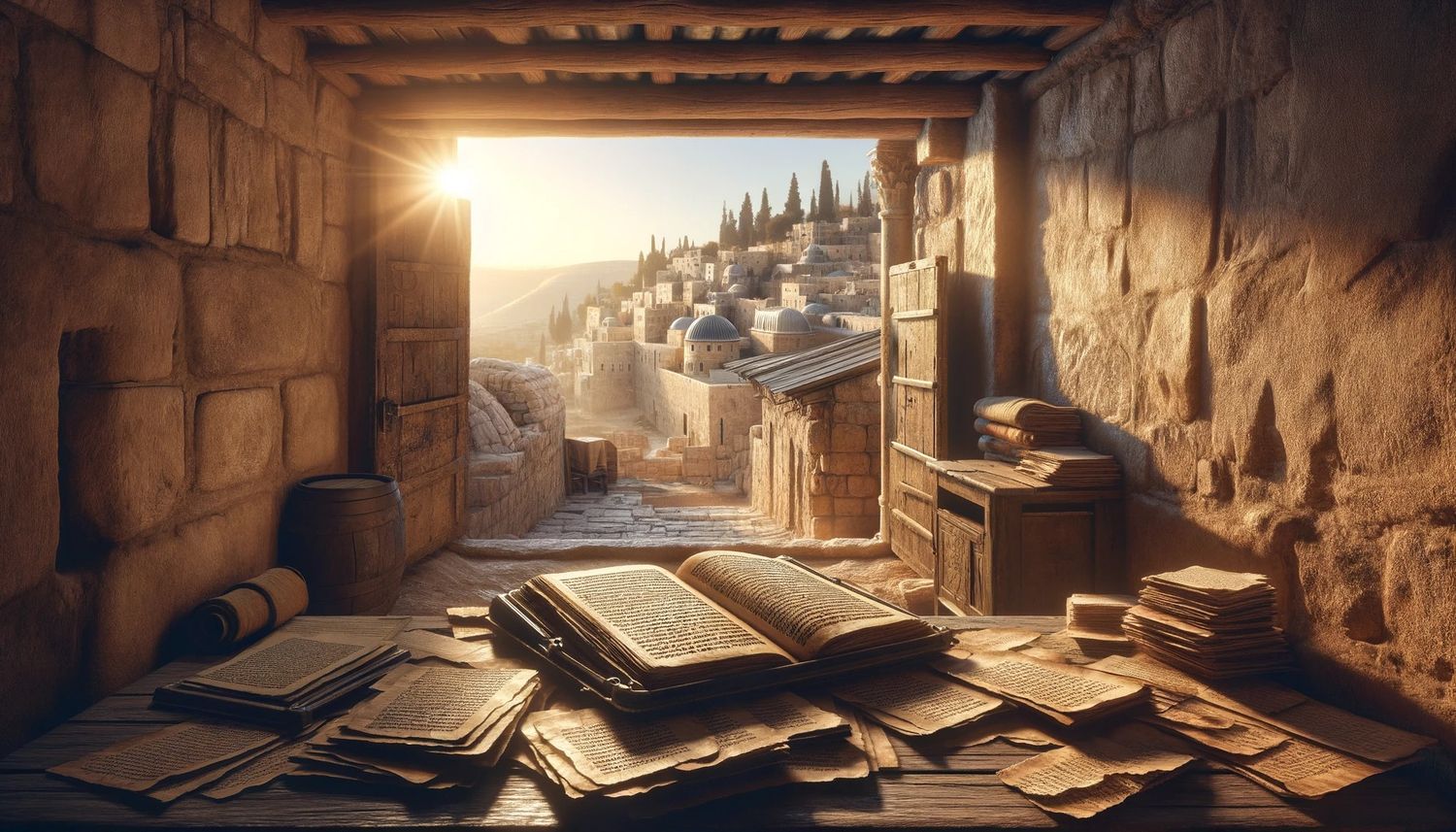Home>Arts and Culture>The Purpose Of The Labyrinth In The Floor Of The Nave Of Chartres Cathedral


Arts and Culture
The Purpose Of The Labyrinth In The Floor Of The Nave Of Chartres Cathedral
Published: February 18, 2024
Ericka Andersen, an editor at Christian.net, expertly merges digital strategy with content creation, focusing on faith and societal issues. Her communication skills enhance the platform's engaging narratives, fostering meaningful dialogue on belief's impact on society.
Explore the significance of the labyrinth in Chartres Cathedral's nave floor, a masterpiece of arts and culture, and its spiritual and historical importance. Uncover the purpose behind this intriguing architectural feature.
(Many of the links in this article redirect to a specific reviewed product. Your purchase of these products through affiliate links helps to generate commission for Christian.net, at no extra cost. Learn more)
Table of Contents
Introduction
Chartres Cathedral, a masterpiece of French Gothic architecture, has long captivated visitors with its awe-inspiring beauty and spiritual significance. Among its many remarkable features, the labyrinth in the floor of the nave stands out as a mysterious and intriguing element of the cathedral's design. This intricate labyrinth, with its winding paths and symbolic motifs, has sparked curiosity and contemplation for centuries, inviting pilgrims and tourists alike to ponder its purpose and meaning.
As we embark on a journey to explore the labyrinth at Chartres Cathedral, we will delve into its rich history, unravel the symbolism woven into its design, and contemplate the profound significance it holds for spiritual seekers and art enthusiasts. Join us as we unravel the enigmatic allure of this ancient architectural marvel and discover the profound insights it offers into the human quest for meaning and transcendence.
Read more: What Is A Nave In A Cathedral
History of Chartres Cathedral
Chartres Cathedral, also known as the Cathedral of Our Lady of Chartres, is a testament to the ingenuity and devotion of medieval artisans and builders. Situated in the picturesque town of Chartres, France, this architectural gem has a storied history that dates back to the 12th century. The cathedral we see today is actually the second structure to have been built on the same site, as the original church was destroyed by fire in 1194.
Following this devastating event, Bishop Fulbert and the townspeople of Chartres were determined to construct a grand cathedral that would surpass its predecessor in magnificence and spiritual significance. The construction of the current cathedral commenced shortly after the fire, and it was completed in an astonishingly short span of time, with the main structure being finished by 1220.
Chartres Cathedral stands as a testament to the unwavering faith and dedication of the medieval craftsmen and artisans who contributed to its creation. The cathedral's architectural style is a stunning example of French High Gothic design, characterized by its soaring spires, intricate stained glass windows, and ornate sculptures. The cathedral's facade, adorned with sculpted portals depicting biblical scenes and figures, serves as a visual narrative of Christian theology and morality.
Moreover, Chartres Cathedral is renowned for its exceptional collection of stained glass windows, which are considered among the finest in the world. These windows, with their vibrant colors and intricate designs, convey biblical stories and spiritual teachings, illuminating the interior of the cathedral with a transcendent glow.
Chartres Cathedral has weathered the tides of history, standing as a resilient symbol of faith and artistic achievement. Its enduring presence continues to inspire pilgrims, scholars, and admirers of art and architecture, drawing them into a timeless dialogue with the divine and the creative spirit of humanity.
The Labyrinth in the Floor of the Nave
At the heart of Chartres Cathedral lies a remarkable feature that has intrigued and fascinated visitors for centuries: the labyrinth in the floor of the nave. This labyrinth, an intricate pattern etched into the stone floor, spans 42 feet in diameter and consists of 11 concentric circles. Its design is a mesmerizing blend of geometric precision and symbolic imagery, drawing the attention of pilgrims, scholars, and art enthusiasts alike.
The labyrinth's winding paths and carefully crafted motifs create a sense of mystery and contemplation, inviting visitors to embark on a symbolic journey of introspection and spiritual significance. As one gazes upon the labyrinth, the interplay of light and shadow within its intricate design evokes a profound sense of reverence and wonder.
The labyrinth's design is adorned with symbolic elements, including rosettes, floral motifs, and mythical creatures, all of which contribute to its enigmatic allure. The path itself, with its twists and turns, mirrors the complexities and challenges of the human experience, symbolizing the meandering journey of faith and self-discovery.
Intriguingly, the labyrinth is not a maze designed to confuse or confound, but rather a meditative tool that encourages contemplation and mindfulness. Pilgrims and visitors are invited to walk the labyrinth's path, following its convoluted route toward the center, where a rosette symbolizes the ultimate destination or spiritual enlightenment.
The labyrinth's presence within the cathedral serves as a tangible expression of the human quest for meaning and transcendence. Its intricate design and spiritual symbolism offer a profound reflection on the interconnectedness of the physical and spiritual realms, inviting individuals to embark on an inner pilgrimage of self-discovery and enlightenment.
As visitors stand at the threshold of the labyrinth, they are presented with a unique opportunity to engage in a timeless ritual of introspection and contemplation. The act of walking the labyrinth's path becomes a metaphor for life's journey, with its twists and turns mirroring the complexities and uncertainties of the human experience.
The labyrinth in the floor of the nave stands as a testament to the enduring power of art and architecture to inspire and uplift the human spirit. Its presence within Chartres Cathedral serves as a poignant reminder of the profound connections between faith, creativity, and the timeless quest for meaning and transcendence.
The Purpose of the Labyrinth
The labyrinth in the floor of Chartres Cathedral's nave serves a multifaceted purpose that transcends its physical presence within the sacred space. At its core, the labyrinth embodies a profound spiritual significance, inviting pilgrims and visitors to engage in a symbolic journey of introspection, meditation, and transcendence.
One of the primary purposes of the labyrinth is to provide a tangible means for individuals to embark on a spiritual pilgrimage within the confines of the cathedral. As pilgrims traverse the labyrinth's winding path, they are encouraged to enter into a state of contemplation and mindfulness, using the physical act of walking as a metaphor for the inner journey of faith and self-discovery. The labyrinth's intricate design and deliberate layout create a meditative environment, allowing participants to immerse themselves in a transformative experience that transcends the boundaries of time and space.
Moreover, the labyrinth serves as a unifying symbol of spiritual interconnectedness, drawing individuals from diverse backgrounds and beliefs into a shared experience of introspection and transcendence. Regardless of one's religious affiliation or personal beliefs, the labyrinth offers a universal invitation to explore the depths of the human spirit and the timeless quest for meaning and enlightenment. In this way, the labyrinth fosters a sense of communal harmony and spiritual kinship, transcending cultural and ideological differences to evoke a shared sense of wonder and reverence.
Furthermore, the labyrinth's purpose extends beyond the realm of spiritual contemplation to encompass the artistic and architectural dimensions of Chartres Cathedral. As an integral element of the cathedral's design, the labyrinth represents a harmonious fusion of art, symbolism, and sacred space. Its presence within the nave serves as a testament to the enduring power of creative expression to inspire and uplift the human spirit, inviting visitors to engage with the cathedral's architectural marvels on a deeply personal and introspective level.
In essence, the purpose of the labyrinth in the floor of the nave is manifold, encompassing spiritual, communal, and artistic dimensions that converge to create a profound and transformative experience for all who encounter it. As visitors stand at the threshold of the labyrinth, they are presented with an opportunity to engage in a timeless ritual of introspection and contemplation, transcending the boundaries of language and culture to connect with the universal aspirations of the human heart.
Symbolism and Meaning
The labyrinth in the floor of Chartres Cathedral's nave is steeped in profound symbolism and meaning, serving as a visual tapestry of spiritual allegory and metaphysical significance. Each element of its intricate design carries layers of symbolism that invite contemplation and interpretation, offering profound insights into the human quest for transcendence and enlightenment.
The labyrinth's circular form, with its 11 concentric rings, symbolizes the eternal journey of the human soul towards spiritual wholeness and divine union. The circular motif, devoid of dead ends or false paths, represents the cyclical nature of existence and the timeless pursuit of inner harmony and enlightenment. As pilgrims traverse the labyrinth's convoluted path, they are reminded of the interconnectedness of all life and the enduring quest for spiritual fulfillment.
Embedded within the labyrinth's design are symbolic motifs, including rosettes, floral patterns, and mythical creatures, each carrying profound significance. The rosettes, positioned at key junctures along the labyrinth's path, symbolize moments of spiritual revelation and awakening, inviting participants to pause and reflect on the deeper mysteries of existence. The floral patterns, intricately woven into the labyrinth's structure, evoke the beauty and transience of earthly life, serving as a poignant reminder of the impermanence of material existence and the enduring vitality of the human spirit.
Furthermore, the labyrinth's mythical creatures, depicted in the form of animals and fantastical beings, embody archetypal symbols of spiritual transformation and transcendence. These enigmatic figures, rendered in stone and shadow, evoke a sense of wonder and mystery, inviting participants to contemplate the timeless themes of rebirth, metamorphosis, and the eternal dance of creation and dissolution.
As pilgrims engage with the labyrinth's symbolism and meaning, they are invited to embark on an inner pilgrimage of self-discovery and spiritual awakening. The labyrinth becomes a sacred space where the boundaries between the physical and spiritual realms dissolve, allowing participants to immerse themselves in a transformative journey of introspection and transcendence.
In essence, the labyrinth in the floor of Chartres Cathedral's nave serves as a profound testament to the enduring power of symbolism and metaphor in conveying the timeless truths of the human experience. Its intricate design and rich symbolism offer a gateway to the depths of the human spirit, inviting participants to explore the universal themes of life, death, and the eternal quest for meaning and transcendence.
Read more: Where Is The Chartres Cathedral
Pilgrimage and Spiritual Journey
The labyrinth in the floor of Chartres Cathedral's nave serves as a profound symbol of pilgrimage and spiritual journey, inviting visitors to embark on an inner quest for meaning and transcendence. Pilgrimage, in its traditional sense, involves a physical journey to a sacred site, undertaken as an act of devotion, penance, or spiritual renewal. However, the labyrinth at Chartres Cathedral redefines the concept of pilgrimage, offering a unique opportunity for individuals to engage in a symbolic and introspective journey within the confines of the sacred space.
As pilgrims enter the cathedral, they are greeted by the enigmatic presence of the labyrinth, its intricate design beckoning them to embark on a transformative odyssey of self-discovery and spiritual awakening. The act of walking the labyrinth's path becomes a metaphor for life's journey, with its twists and turns mirroring the complexities and uncertainties of the human experience. Each step taken within the labyrinth's confines becomes a deliberate act of mindfulness and contemplation, inviting participants to reflect on the deeper mysteries of existence and the timeless quest for inner harmony.
The labyrinth's circular form, devoid of dead ends or false paths, symbolizes the cyclical nature of spiritual growth and the eternal pursuit of wholeness. As pilgrims traverse its winding route, they are reminded of the interconnectedness of all life and the universal aspirations of the human heart. The labyrinth becomes a sacred space where the boundaries between the physical and spiritual realms dissolve, allowing participants to immerse themselves in a transformative journey of introspection and transcendence.
Moreover, the labyrinth fosters a sense of communal harmony and spiritual kinship, transcending cultural and ideological differences to evoke a shared sense of wonder and reverence. Regardless of one's religious affiliation or personal beliefs, the labyrinth offers a universal invitation to explore the depths of the human spirit and the timeless quest for meaning and enlightenment. In this way, the labyrinth becomes a unifying symbol of spiritual interconnectedness, drawing individuals from diverse backgrounds into a shared experience of introspection and transcendence.
In essence, the labyrinth in the floor of Chartres Cathedral's nave redefines the concept of pilgrimage, inviting participants to embark on a timeless odyssey of self-discovery and spiritual awakening. Its presence within the sacred space serves as a poignant reminder of the enduring power of art and architecture to inspire and uplift the human spirit, transcending the boundaries of language and culture to connect with the universal aspirations of the human heart.
Conclusion
In conclusion, the labyrinth in the floor of Chartres Cathedral's nave stands as a timeless testament to the enduring power of art, spirituality, and human creativity. Its intricate design, rich symbolism, and profound significance offer a gateway to the depths of the human spirit, inviting pilgrims and visitors to embark on a transformative journey of introspection and transcendence.
As we reflect on the labyrinth's purpose and meaning, we are reminded of its capacity to transcend cultural and ideological boundaries, offering a universal invitation to explore the interconnectedness of the physical and spiritual realms. The labyrinth becomes a unifying symbol of spiritual kinship, drawing individuals from diverse backgrounds into a shared experience of wonder and reverence.
Moreover, the labyrinth redefines the concept of pilgrimage, inviting participants to embark on a symbolic and introspective journey within the confines of the sacred space. Its circular form, devoid of dead ends or false paths, symbolizes the cyclical nature of spiritual growth and the eternal pursuit of wholeness. As pilgrims traverse its winding route, they are reminded of the interconnectedness of all life and the universal aspirations of the human heart.
The labyrinth's presence within Chartres Cathedral serves as a poignant reminder of the enduring power of creativity to inspire and uplift the human spirit. Its intricate design and rich symbolism offer a profound reflection on the interconnectedness of the physical and spiritual realms, inviting individuals to embark on an inner pilgrimage of self-discovery and enlightenment.
In essence, the labyrinth in the floor of the nave transcends the boundaries of time and space, inviting participants to immerse themselves in a transformative experience that speaks to the universal themes of life, death, and the eternal quest for meaning and transcendence. It stands as a timeless symbol of the enduring human quest for spiritual fulfillment and the timeless dialogue between faith, creativity, and the human spirit.
